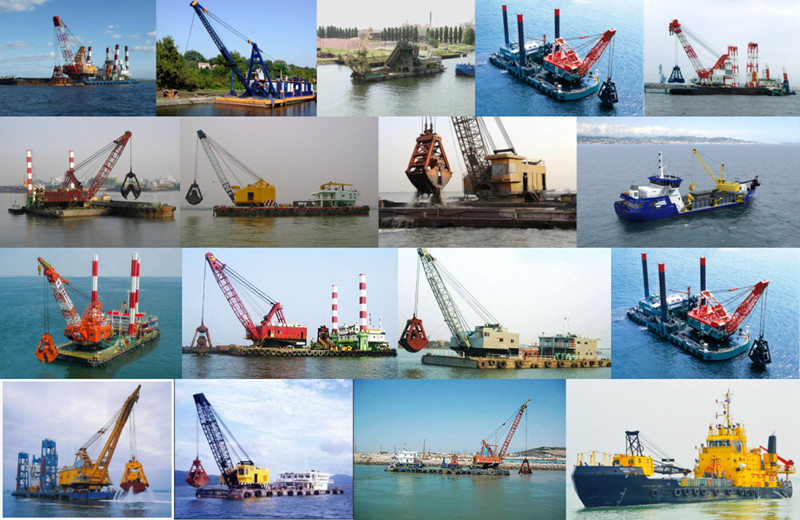
In order to prevent the acidification of the soil from intensifying, the professional technicians of the Jinning County Agricultural Technology Promotion Center often go deep into the fields to extract soil samples, understand the planting situation of farmers, and make records. The retrieved soil sample must be subjected to many complicated processes such as air drying and screening, and then be tested by the instrument. For the soil showing a ph value of less than 7, the acidification phenomenon can be confirmed.
“The more the land is not growing, the less fertility the chemical fertilizer can only alleviate. The soil is even worse when it is planted in the coming year. What is going on in the end?†Li Ningxi, a peasant in Jinning County, watched as his home’s increasingly “sour†land was guilty of worry. In recent years, the Agricultural Technology Promotion Center of the Jinning County Agriculture Bureau has set up 24 long-term monitoring and positioning points in the whole county for the problem of land acidification in the entire county. It has detected more than 40,000 acres of land where acidification has occurred, and has taken more than 2,200 soil samples. Obtain first-hand information on the land and guide farmers to improve their soil and fertilize properly, effectively delaying the acidification of the soil and ensuring farmers' income from planting.
Jinning County was originally a major planting area for grain crops such as corn and rice. Around 2006, with the declining economic benefits of food crops, farmers planted vegetables, flowers, and other economic crops. As the land cultivation cycle is greatly shortened, the soil fertility is reduced, and the growers blindly use chemical fertilizers, and the use of plastic greenhouses and greenhouses, the direct contact between soil and air, rainwater, and sunlight is blocked, making it possible to start three or four years after the start of 2006. The acidification of the soil in Jinning County was serious.
“We have started soil monitoring since 1998. We have changed from several monitoring sites to the current 24 long-term monitoring sites and random sampling sites to monitor the soil at any time. We have taken different measures to improve the degree of acidification.†Jinning Agriculture Director Wang of the Technology Promotion Center introduced that the establishment of the monitoring site enabled the Agricultural Technology Promotion Center to have a more accurate grasp of the soil conditions in the county, and also provided guidance for the farmers to adapt to the disease and to improve the soil according to local conditions.
In order to prevent the acidification of the soil from intensifying, the professional technicians of the Jinning County Agricultural Technology Extension Center often go deep into the fields to extract soil samples, understand the planting situation of farmers, and make records. The retrieved soil samples are subjected to many complicated procedures such as natural air drying and screening, and then tested by the instrument. For the soil showing a ph value of less than 7, the acidification phenomenon can be confirmed. If there is any arable land on this soil, the technical staff at the center must guide the farmers to carry out soil improvement, rational fertilization, and adjustment of soil pH. The main measure of “resuding acid†is to instruct farmers to use quicklime to adjust the pH, and to eliminate the use of acidic fertilizers. By adding organic fertilizers and biological bacterial fertilizers, using alkaline fertilizers such as foliar spraying and other extra-root fertilizers, effectively delays. And improve the acidification of the soil.
Dredging is an excavation activity usually carried out underwater, in shallow seas or freshwater areas with the purpose of gathering up bottom sediments and disposing of them at a different location. This technique is often used to keep waterways navigable. It is also used as a way to replenish sand on some public beaches, where sand has been lost because of coastal erosion. Dredging is also used as a technique for fishing for certain species of edible clams and crabs (see fishing dredge).
Photo of our Dredger :


Types of dredging vessels
Suction
The dredge Drag Head of a suction dredge Barge on the Vistula River, Warsaw, Poland
The Geopotes 14 lifting its boom on a canal in The Netherlands. (gēopotēs is Greek for "that which drinks earth")
For suction-type excavation out of water, see Suction excavator.
These operate by sucking through a long tube, like some vacuum cleaners but on a larger scale.
A Plain Suction Dredger has no tool at the end of the Suction Pipe to disturb the material. This is often the most commonly used form of dredging.[citation needed]
Trailing suction
A trailing Suction Hopper Dredger (TSHD) trails its suction pipe when working. The pipe, which is fitted with a dredge drag head, loads the dredge spoil into one or more hoppers in the vessel. When the hoppers are full, the TSHD sails to a disposal area and either dumps the material through doors in the hull or pumps the material out of the hoppers. Some dredges also self-offload using drag buckets and conveyors.
The largest trailing suction hopper dredgers in the world are currently Jan De Nul's Cristobal Colon (launched 4 July 2008) and its sister ship Leiv Eriksson (launched 4 September 2009. Main design specs for the Cristobal Colon and the Leiv Eriksson are: 46,000 cubic metre hopper and a design dredging depth of 155 m.[3] Next largest is HAM 318 (Van Oord) with its 37,293 cubic metre hopper and a maximum dredging depth of 101 m.
Cutter-suction
A cutter-suction dredger's (CSD) Suction Tube has a cutting mechanism at the suction inlet. The cutting mechanism loosens the bed material and transports it to the Suction Mouth. The dredged material is usually sucked up by a wear-resistant centrifugal pump and discharged either through a pipe line or to a barge. Cutter-suction dredgers are most often used in geological areas consisting of hard surface materials (for example gravel deposits or surface bedrock) where a standard suction dredger would be ineffective. In recent years, dredgers with more powerful cutters have been built in order to excavate harder rock without the need for blasting.
The two largest cutter suction dredgers in the world are currently (as at August 2009) DEME's D'Artagnan (28,200 kW total installed power)and Jan De Nul's J.F.J. DeNul (27,240 kW).both built by IHC Merwede.
Auger suction
This process functions like a Cutter Suction Dredger, but the cutting tool is a rotating Archimedean screw set at right angles to the suction pipe. The first widely used auger dredges were designed in the 1980s by Mud Cat Dredges, which was run by National Car Rental, but is now a Division of Ellicott Dredges. In 1996, IMS Dredges introduced a self-propelled version of the auger dredge that allows the system to propel itself without the use of anchors or cables. During the 1980s and 1990s auger dredges were primarily used for sludge removal applications from waste water treatment plants. Today, auger dredges are used for a wider variety of applications including river maintenance and sand mining.
The most common auger dredge on the global market today is the Versi-Dredge. The turbidity shroud on auger dredge systems creates a strong suction vacuum, causing much less turbidity than conical (basket) type cutterheads and so they are preferred for environmental applications. The vacuum created by the shroud and the ability to convey material to the pump faster makes auger dredge systems more productive than similar sized conical (basket) type cutterhead dredges.
Dredger
Cutter Suction Dredger,Bucket Dredger,Grab Dredger,Trailing Hopper Suction Dredger
Unisite Group Ltd. , http://www.shipsparts.nl